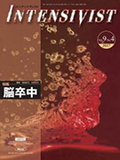Japanese
English
- 有料閲覧
- Abstract 文献概要
- 参考文献 Reference
脳卒中は,長らく我が国の死因の第3位であったが,平成27(2015)年の調査で第4位となり,肺炎に追い越されている。また,平成26(2014)年の脳血管疾患の総患者数は3年前の調査よりも約6万例(5.1%)減少している。一方,脳血管疾患(脳梗塞や脳出血など)の医療費は1兆7,821億円で,訪問看護医療費や療養費の増加がみられている。このことから,患者数および患者死亡数の減少にもかかわらず,重篤な後遺症をもつ要介護・要介助者の増加が伺える。ガイドラインによる治療の標準化や新規薬物・デバイスの普及が進み,生命転帰は改善している一方,長期転帰を見据えた急性期・集中治療管理とシームレスなリハビリテーションへの移行が重要と思われる。本特集は上記を趣旨におき,集中治療のスペシャリストとして知るべき基礎知識と,最新文献の渉猟によるアップデートされた知識を得ることを目標に編集した。
In Japan, stroke has been the third most common cause of death for many years. However, its position has recently been replaced by pneumonia, and stroke is now fourth most common. The total number of stroke patients has declined by approximately 60,000 (5.1%) during the last six years. However, the national medical costs for stroke care have increased by 17 billon USD (≒1,782,100,000,000 yen), mostly due to the increase in costs for home nursing care and care in chronic facilities. The number of patients suffering strokes and stroke-related deaths is decreasing, due to the implementation of standardized guideline-based treatments and the use of novel drugs and treatment devices. However, the number of patients with severe disabilities who need long-term nursing care and physical assistance is increasing, which could be improved by a seamless transition from acute intensive care to early rehabilitation, for improvement of long-term functional outcomes. Based on the current epidemiology of strokes mentioned above, we edited this special issue of the journal to share basic and updated knowledge regarding strokes with critical care specialists through recently available reviews.
Copyright © 2017, MEDICAL SCIENCES INTERNATIONAL, LTD. All rights reserved.


